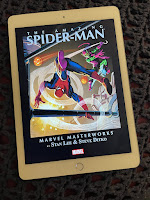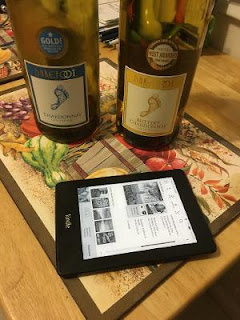I tend to drink inexpensive though always passable wine at home, and spend a little more for wines by the glass when I'm out. I guess when I'm home I'm watching TV or reading and my full attention isn't on the wine, so something simply crisp and refreshing is fine. And since I usually drink white wine, the fact that it's always nicely chilled can distract from any shortcomings, as long as they aren't egregious.
Barefoot, an economical California wine, is a decent wine for my at-home purposes, and I buy the winery's Chardonnay a lot. The other day at the liquor store, however, I saw that Barefoot is now getting a little ambitious and is now offering a new "Buttery" Chardonnay along with its regular one. So of course I had to buy it, and of course I had to do a little comparison tasting using the dregs left from my existing bottle of regular Barefoot.
The result? I can't say there is a huge difference between the two. Regular Barefoot Chardonnay is crisp and refreshing, maybe a little fruity. And Barefoot Buttery Chardonnay are all those things, but maybe a little less crisp and a tiny bit more smooth. It certainly didn't taste all that buttery. But maybe that's a good thing: sometimes less expensive wines take short cuts to get a tasting note they're after, usually by simply adding an artificial flavor rather than complicating the fermentation process. So Barefoot could have simply added some artificial buttery flavor, but based on the lack of obvious butteriness, I don't think they did.
In the end, I guess I like both and will probably alternate between them, based on what I'm in the mood for and, let's be honest, which one might be one sale. For drinking at home, though, I'm basically fine with either a crisper wine or a smoother wine. And for what it's worth Barefoot's Pinot Grigio is pretty good, too, and definitely crisper- and more tart- than either of its Chardonnays.
Large (1.5 liter) bottles of Barefoot usually top out at $14.99 per bottle, but are often on sale (at least here in Pennsylvania) for $10.99 to $12.99.





